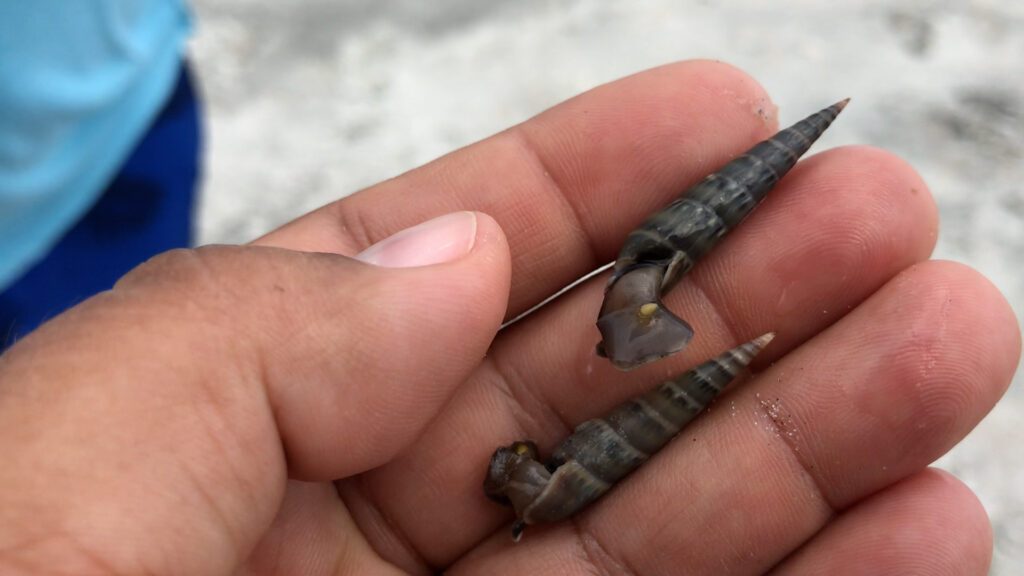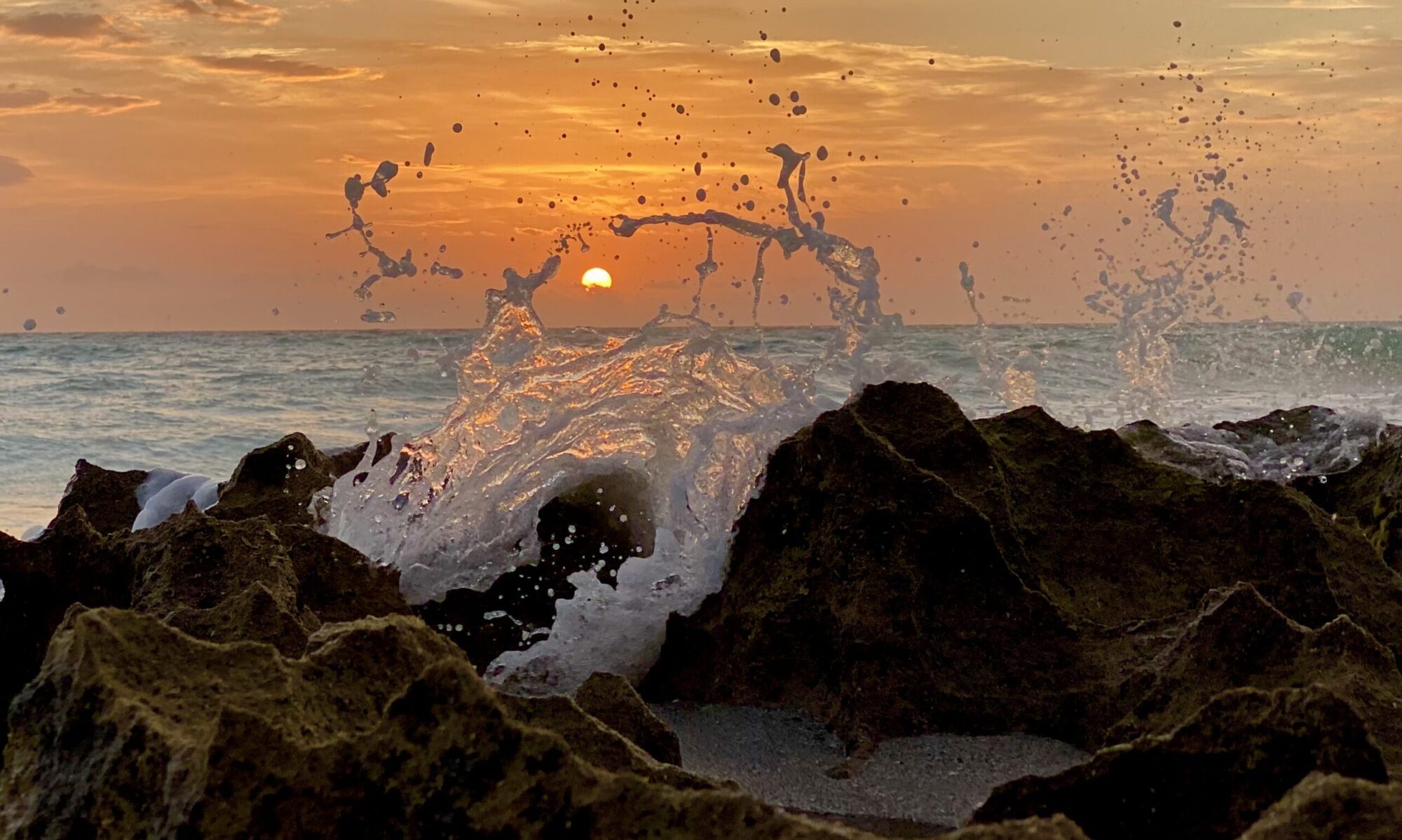Visiting Little Talbot Island State Park my daughter and I found lots of live augers in the swash zone, where the waves run-up and -down the sand. It was amazing seeing and holding them! In researching which type of auger shells they were I had a hard time making an identification. They were either Gray Atlantic (Hastula cinerea) or Salle’s Augers (Hastula salleana).

I reached out to the Bailey-Matthews National Shell Museum & Aquarium to see if I could get some additional guidance over searching online and the shell books I have. José H. Leal, Ph.D., Science Director & Curator there informed me that, “the only apparent ‘decisive’ distinction is the microsculpture of tiny perforations.” He let me know that ‘some’ say because they are so similar they say they are one and the same taxon. Dr. Leal sent me a shell-level comparison LINK that was helpful. He didn’t make an identification of the augers we found on Little Talbot Island. I did send him screen shots of them; but he would have to have the shell in hand to ID it.
Salle’s Augers (Hastula salleana) have microscopic pinpoints and are smaller than Gray Atlantics (Hastula cinerea) at around 1/2 inch, whereas the Gray Atlantic Augers are about 1 inch and the shell surface has numerous rows of microscopically fine, incised spiral lines. I got that information from the book, “A Guide to Field Identification Seashells of North America,” by Tucker Abbott. Which is a very good book with beautiful detailed illustrations of shells drawn by George F. Sandstrom. It’s an old book from 1968 but I was happy to land a used copy on Amazon.
After reviewing the shell-level comparison and referring to Abbott’s book, I believe the augurs we found were Gray Atlantic Augers (Hastula cinerea). What made me decide was studying the lip and ribs of the body whorl of the shells from the shell-level comparison LINK and from Abbott’s book where he refers to their sizes. The ones we found, in my hand were approximately 1” or larger based on how they were laying against my fingers using that to measure them. Also, the illustrations in Abbott’s book of them is very well-illustrated.
Personally, I think that they could very well be labeled the same species with two forms.
Roxann Morin
YouTube.com/@FloridaBeachWalks

